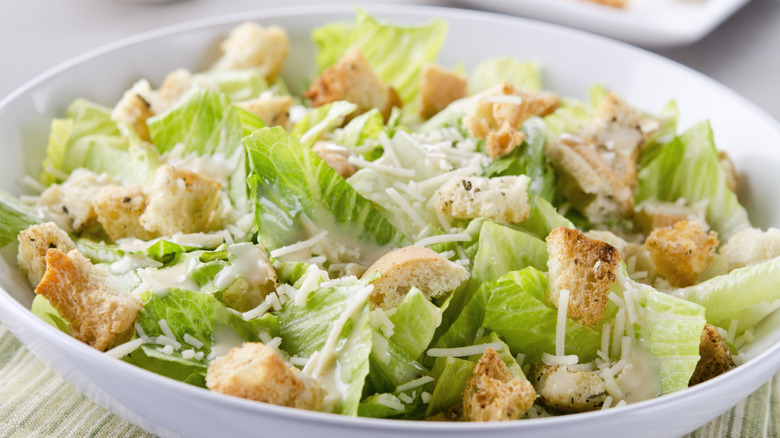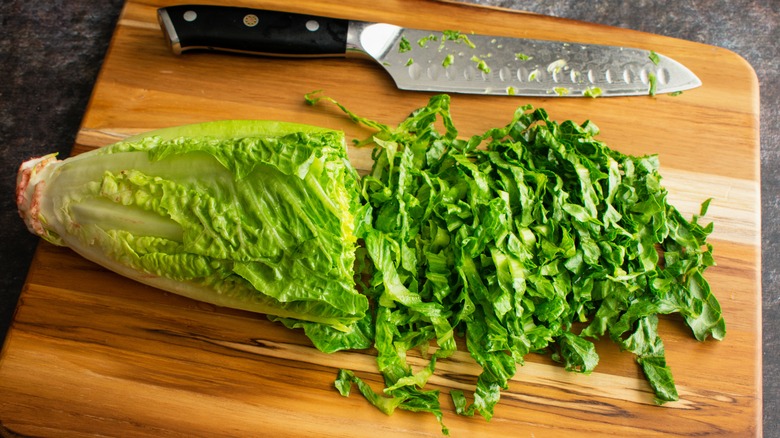Put Down The Spinach! Only Romaine Lettuce Goes In Caesar Salad
It seems like everyone is looking to optimize the nutritional value of their meals, even with foods like salad, which has upsettingly led to folks swapping out the classic romaine lettuce for the dark leafy greens of spinach, arugula, and even kale in a Caesar salad. Friends, we must object. It's said that romaine lettuce offers little but water and fiber, but the point of food like Caesar salad is to truly enjoy it, not try to maximize the nutritional value of each calorie. When it comes to the texture, crunch factor, and the ability to stand up to the heavy, creamy Caesar dressing, you've got to go with romaine.
Kale, spinach, and other dark leafy greens have been touted as superfoods. Plenty of people are in a constant search for that life-changing ingredient that will finally make them healthy and happy, which means they're willing to give up classic recipes for more so-called nutritious options. That leads to making ingredient swaps like spinach for romaine, but thinking the two are interchangeable as salad leaves is a mistake. Romaine lettuce really is uniquely suited to the texture and structure of a Caesar salad and has more to offer than you might think.
Romaine is more than crunchy water
Traditional Caesar salad is made with romaine lettuce, parmesan cheese, croutons, and of course, the signature Caesar dressing. Some elements may vary slightly, and a Caesar might include things like lemon wedges, cherry tomatoes, and even chicken breast. We aren't averse to these innovations, except when it comes to salad leaf swapping. Just like you don't want to swap the iceberg wedge in a wedge salad with chopped lettuce because the leaves will become saturated with dressing, romaine is the ideal choice for the Caesar salad because of its crispy but sturdy nature. It won't sog and crumble under the weight of the thick, egg-based dressing, unlike spinach and arugula. While kale is probably strong enough to stand up to the pressure of the dressing in a Caesar salad thanks to its tough texture, it also has a distinct, bitter flavor that isn't true to the classic Caesar.
If the pleasure of eating romaine lettuce alone wasn't enough to keep it in Caesar salads, it should also be noted that these crunchy leaves aren't just water and fiber. According to the U.S. Department of Agriculture, romaine lettuce is a good source of vitamin K, which studies have shown promotes bone health, has similar levels of vitamin A as spinach, and is a good source of folate. So even if you are in search of a nutritionally dense diet, don't be so quick to dismiss romaine lettuce as the perfect foundation for your Caesar salad.

